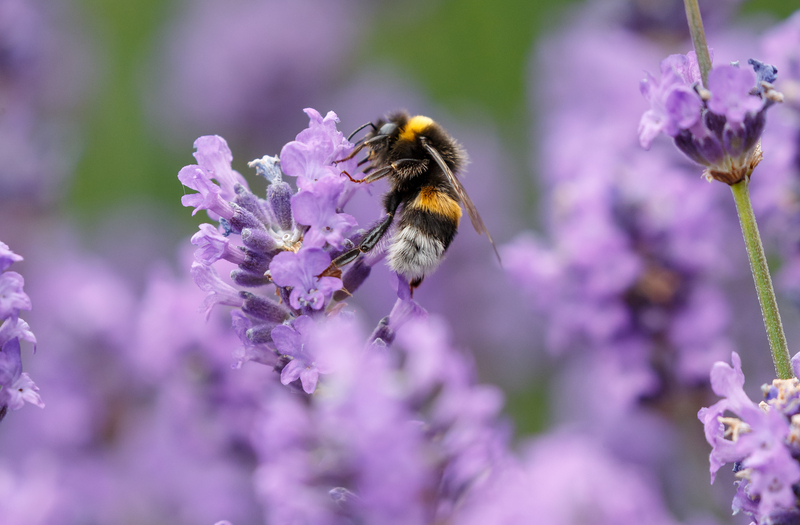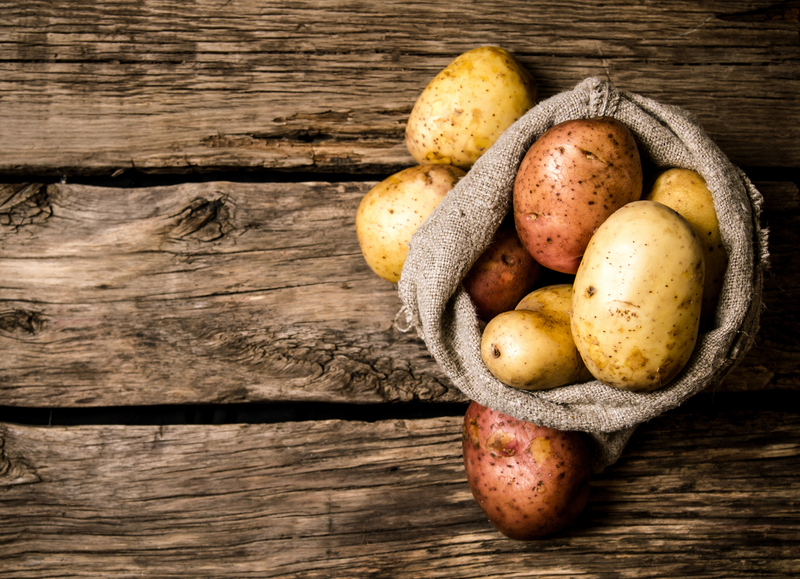Unveil the Secrets of Winter Plant Protection Today
Posted on 21/06/2025
Unveil the Secrets of Winter Plant Protection Today
Winter can be a magical time of year, but for gardeners and plant lovers, it is often accompanied by concern for their beloved plants. Freezing temperatures, snow, ice, and unpredictable weather fluctuations can threaten everything from delicate perennials to robust trees. In this comprehensive article, we will unveil the hidden secrets of winter plant protection, providing expert knowledge, effective techniques, and practical tips to ensure your garden thrives, even in the coldest months.

Why Winter Plant Protection Matters
It is common to believe that plants simply "sleep" through winter. However, harsh winter conditions can inflict lasting damage, risking the loss of plants, reduced bloom in spring, or even permanent setbacks for young or sensitive species.
- Frost Damage: Freezing water in plant tissues leads to cell burst, causing blackened leaves and wilted stems.
- Desiccation: Wind and sun dry out plant tissue faster than roots can replace lost moisture.
- Soil Heaving: Repeated freeze-thaw cycles force roots from the ground, exposing them to cold and drying air.
- Rodent and Deer Damage: Scarce food may drive hungry animals to gnaw bark or graze on foliage.
Understanding these hazards is the first step to proper winter plant hazard mitigation. Let's now dive into the methods used by experienced gardeners worldwide.
Identifying Plants Most at Risk During Winter
Not all plants face equal peril when temperatures drop. Knowing which varieties in your landscape require extra winter plant protection techniques will help you prioritize.
- Tender perennials (such as dahlias, cannas, and gladiolus)
- Evergreen shrubs (e.g., boxwood, holly, and azaleas)
- Recently planted trees and shrubs without established root systems
- Container plants exposed to freezing air on all sides
- Flower bulbs lacking adequate mulch
By focusing your attention on these vulnerable groups, you significantly increase your chances of spring success.
Essential Techniques for Winterizing Your Garden
1. Mulching: Nature's Blanket
Mulch is arguably the most effective method of winter plant protection. A thick layer of organic mulch keeps temperatures around roots stable while retaining moisture.
Consider using:
- Shredded bark
- Leaf mold
- Pine needles
- Straw
Application Tips:
- Apply mulch after the ground has slightly frozen to avoid attracting rodents that may nest in the warmth.
- Layer mulch 2-4 inches deep, keeping it several inches away from trunks and stems to prevent rot.
2. Wrapping and Burlap Screens
Windburn and sunscald are serious threats, particularly to evergreens and thin-barked trees. To protect plants from winter damage, consider:
- Burlap Screens: Create windbreaks by staking burlap around sensitive evergreens. Ensure it's tall enough to shield from prevailing winds.
- Tree Wraps: Apply commercial tree wrap or light-colored plastic spirals to trunks of young or delicate trees to prevent cracking and sun injury.
These barriers not only shield from harsh winds but also from salt spray along roads.
3. Watering Before Freeze
Dry soil is a leading cause of winter plant stress. Before the ground freezes, provide a deep watering to allow plants to absorb and store moisture for the dormant months.
- Ideal Timing: Water in late fall when daytime temperatures remain above freezing.
- Purpose: Well-hydrated roots are less susceptible to desiccation and can withstand rapid thawing cycles.
4. Correct Pruning Practices
Never prune plants hard before winter unless recommended for specific species. Pruning stimulates new growth, which can be vulnerable to frostbite. Remove any dead or diseased branches, but wait until late winter or early spring for shaping cuts.
- Exception: Remove branches that could break under heavy snow or rub against structures.
5. Winterizing Container Plants
Plants in containers face greater risk because their roots are exposed on all sides. To maximize winter plant cold protection:
- Group pots together in a sheltered spot protected from wind.
- Wrap containers in bubble wrap, burlap, or insulation fabric.
- Consider moving hardy containers into an unheated garage or shed for the worst months.
- Reduce watering, but do not let soil dry out completely.
Always check the drainage of pots to prevent damage from winter rain and thawing snow.
6. Utilizing Cloches, Cold Frames, and Row Covers
For vegetables or prized tender ornamentals, structures like cloches, cold frames, or row covers can extend the growing season and shield plants from snow, frost, and icy winds.
- Place individual glass or plastic cloches over young plants.
- Build a cold frame with recycled windows and a wooden base for salads, spinach, or herbs.
- Drape horticultural fleece or plastic sheeting on hoops over garden beds or rows.
Remember to ventilate on sunny days to prevent overheating and excess moisture buildup.
Combatting Winter Pests: Animal and Rodent Defense
Hungry deer, rabbits, mice, and voles may turn to garden plants for food. These creatures can gnaw bark, girdling young trees, or dig up bulbs.
- Physical Barriers: Install chicken wire or hardware cloth cylinders around tree trunks, set at least 6 inches below ground if possible.
- Repellents: Commercial sprays or home remedies (e.g., hot pepper, egg wash) deter some animals but may need frequent reapplication.
- Clear Debris: Remove brush piles, fallen fruit, and dense mulch near trunks to reduce habitat for rodents.
Vigilance during winter will save disappointment in spring!
The Science Behind Frost and Freeze Tolerance
Understanding the way plants respond to cold can profoundly influence how you approach winter plant weather protection. Many plants enter a state of dormancy, reducing water and nutrient needs and transforming cell chemistry for frost tolerance. Yet, sudden temperature drops or unseasonal warm spells can disrupt this adaptation.
- Acclimatization: Plants that slowly adapt to falling temperatures build up sugars and proteins that serve as natural "antifreeze."
- Sudden Freezes: Unseasonal frosts can damage new, unprotected tissues, emphasizing the importance of gradual acclimatization and passive protection like mulching.
What About Houseplants?
Houseplants, too, need care during winter! Dry indoor air, temperature fluctuations, and low light can stress them even without direct cold exposure.
- Keep them away from drafty windows and hot radiators.
- Reduce watering and fertilization--growth slows in winter.
- Increase humidity with pebble trays, misting, or a humidifier.
- Wipe leaves to maximize light absorption.
For houseplant enthusiasts, these small adjustments maintain healthy, resilient greenery all season.
Common Winter Plant Protection Mistakes (And How to Avoid Them)
Knowing what not to do can be as valuable as knowing what to do! Avoid these frequent errors for optimal winter garden protection:
- Applying mulch too early can attract overwintering pests and delay soil freezing, leaving plants vulnerable to sudden thaws.
- Sealing plants air-tight under plastic without ventilation, which promotes mold and rot.
- Neglecting late-fall watering increases drought stress over winter.
- Pruning at the wrong time exposes tender shoots, which the frost may damage.
- Over-fertilizing late in the season, encouraging soft new growth easily harmed by cold.
A careful balance between protection and natural acclimatization is key.
FAQ: Answering Your Most Asked Questions About Winter Plant Protection
How do I know if my plants survived winter?
Wait until late spring before deciding. Scrape a small section of bark; if you see green underneath, your plant is alive. Evergreen needles and leaf buds should swell in response to warmth.
Is it better to cover all plants or just the sensitive ones?
Focus on vulnerable, young, or shallow-rooted plants. Overprotecting the hardiest native or established plants can interfere with their natural dormancy cycles.
What temperature is critical for most garden plants?
Most temperate perennials handle light frost (down to 26?F/-3?C), but extended cold below 20?F (-7?C) threatens non-hardy species without intervention.
Does snow help or hurt plants?
Snow acts as an insulating blanket. However, heavy, wet snow accumulation can break branches. Brush off limbs gently after each storm to prevent damage.
Preparing for Spring: Unwrapping and Recovery
Your efforts to unveil the secrets of winter plant protection will pay off as the ground thaws and plants emerge. Here's how to transition successfully:
- Remove winter covers gradually to let plants slowly adjust to increasing light and air.
- Rake away mulch from crowns once growth resumes to prevent rot.
- Inspect and prune out any winter-killed wood.
- Resume normal watering when soil is workable.
- Apply balanced fertilizer only when new growth appears, supporting recovery and blooming.

Top Products to Aid Winter Plant Protection
The market offers many specialized tools and products designed for winter protection of plants. Consider these helpful options:
- Frost blankets and horticultural fleece
- Reusable plant cones and cloches
- Burlap rolls and garden netting
- Mulch mats and root wraps
- Organic pest deterrents for rodents and deer
Conclusion: Mastering the Art of Winter Plant Protection
Now that you know these essential secrets of winter plant protection, you can move through winter with confidence!
It all comes down to planning, observation, and timely intervention. By understanding plant vulnerabilities, employing the most effective winterizing methods, and adjusting your approach to your local climate, you can ensure a vibrant, healthy garden ready to burst into color in spring.
Don't let the cold catch you off guard--start protecting your plants today and become a true winter gardening expert!
Happy gardening, and let your garden's winter resilience be your pride this season!

